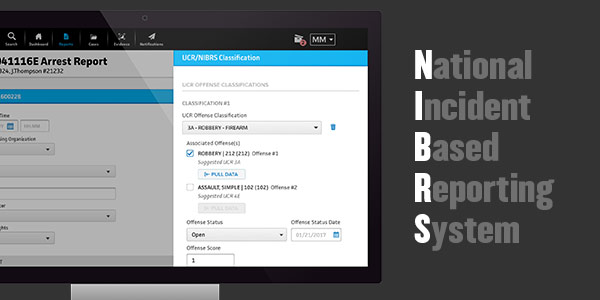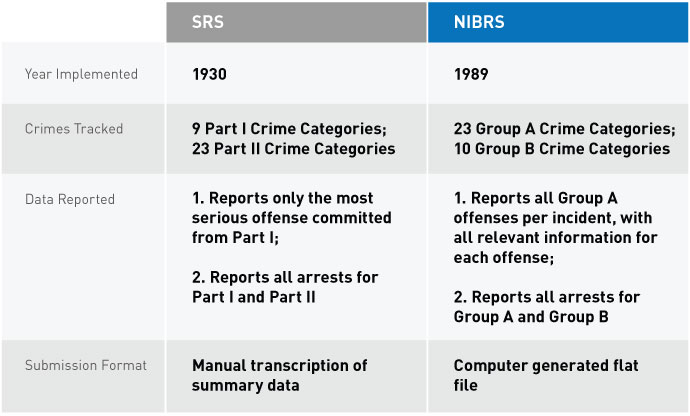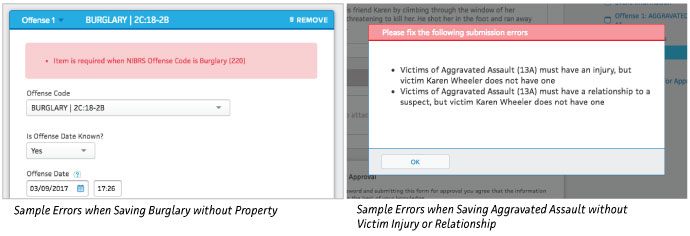How to Achieve NIBRS Compliance Without Disrupting Your Department
NIBRS Team | 14 March 2017 | 4 minute read

In the days of Al Capone and Bonnie and Clyde, the International Association of Chiefs of Police established the first national program for collecting crime statistics – the Summary Reporting System (SRS). SRS was initially based on a subset of seven core crime categories — criminal homicide, rape, robbery, assault, burglary, larceny-theft, and motor vehicle theft. (Two more were added at later date: arson and human trafficking.) After SRS was formed under the FBI’s Uniform Crime Reporting (UCR) Program, agencies began to submit monthly aggregate reports of each crime category, reporting summaries of the number of committed and cleared offenses.
Laws and criminal activity have evolved since the 1920s. So, in the 1980s, the FBI began developing the National Incident Based Reporting System (NIBRS) to modernize crime reporting and improve the quality of crime data. As the name suggests, NIBRS collects all of the information about an incident, giving a comprehensive view of the offenses and officers’ actions within a single event. A single NIBRS submission includes information about each incident’s offenses, victims, suspects, properties and their statuses, as well as associated arrestees.
NIBRS reporting eliminates many of the questions and misconceptions surrounding crime rates as represented by the SRS, and provides a holistic view to identify trends locally and nationwide. Yet by the latest measures, only a third of law enforcement agencies participating in the FBI’s UCR program are submitting NIBRS data; the rest are still submitting statistically flawed SRS data.
In June 2016, FBI Director James Comey sent a letter to state-level UCR agencies announcing that the federal UCR program will transition to NIBRS-only data collection by January 1, 2021. While Director Comey pointed out that NIBRS allows law enforcement to be “more transparent and accountable to the communities they serve,” the switch to the new system would be costly and time-consuming. Some such challenges agencies have faced include:
- upgrading current RMS software to support NIBRS submissions
- retraining law enforcement personnel on new NIBRS reporting requirements
- developing new workflows for submitting NIBRS data to state and federal UCR programs
With an imminent date set for NIBRS-only data collection, RMS providers like Mark43 can assist law enforcement agencies in making a seamless transition to this more modern and sophisticated crime reporting standard.
Intersecting Compliance and Efficiency
At Mark43, we believe an officer must be able to give a comprehensive report of his or her actions in the field without being burdened by the complexities of NIBRS reporting. The rules for compliant NIBRS reporting can quickly become overwhelming, so a report-writing system must allow an officer to navigate required fields as efficiently and accurately as possible.
Mark43’s RMS puts the burden of NIBRS compliance on the RMS itself. For instance, our ‘dynamic field’ feature displays different dropdowns and prompts depending on the type of offense. Officers only see information that requires their input, if required information isn’t entered on the officer’s first pass, the RMS displays instructional messages to resolve the error. That way, a burglary report, for example, can’t be submitted without the property involved, and supervisors and records staff don’t waste time tracking down the officer to finish an incomplete report.
At the same time, Mark43’s RMS prompts the officer to enter the necessary information as it is deemed by NIBRS but does not limit the officer if he or she wants to submit additional information relevant to the incident. For example, while NIBRS only requires reporting the sex, age, race, and ethnicity of a victim or offender, Mark43’s ‘person profiles’ track more extensive physical and behavioral traits that may be valuable for crime analysis beyond what’s required by NIBRS submissions.
Continuing Compliance
Transitioning to NIBRS will not end in 2021; data collection is a continuous, ever-changing process. The FBI’s recently released Use of Force reporting standard is an example of how new requirements can emerge in reaction to nationwide events. Other changes may be more gradual. The FBI has already planned to amend the aggravated assault/homicide classification to include domestic-violence related offenses in January 2018. Either way, departments need to be nimble in adapting to new data collection requirements.
The burden here should be on the department’s RMS. Mark43 system administrators have the ability to quickly add new fields, and set dates for when those fields should be activated or deactivated. In the midst of a transition, our team can also automatically map old SRS fields to new NIBRS ones, and export data in multiple formats.
Even a system with every configuration capability available needs to be backed by an RMS provider that is just as flexible and adaptable. As a cloud-based solution, Mark43 releases new RMS updates every two weeks, allowing departments to run on the on the latest product version with no additional cost or downtime. Advancing improvements in policing and crime policy is a group effort, and your RMS is a key piece in minimizing administrative and operational disruption.
Interested in learning more about NIBRS? Learn more from our NIBRS Experts by watching their on-demand webinar, ‘What’s the Hype Behind NIBRS.’ Olga and Alex use sample crime reports to demonstrate the changes NIBRS will bring and discuss how departments will submit national and state reports after 2021.






